Education
![]()
- Endless Wonders
-
ふしぎエンドレス [NHK]
Endless Wonders is a science program for elementary schoolers. The “Wonder Monsters” featured in the program will take children on a journey to discover and challenge the wonders that can be found around them, through exciting footages and everyday references. These episodes are mainly aimed for 5th graders. In each episode, the Wonder Monsters present a particular everyday “wonder.” The program guides children to make predictions about the factors that are key in unraveling that wonder, and gets them thinking about how they can check their predictions through experiments. What are the conditions? How do you check if a prediction is correct? Wonder Monsters grow by eating what the children discover! The discussions and sharing of ideas between the elementary schoolchildren who appear, serve as hints for the viewer to start thinking science too.
 Endless Wonders 2021
Endless Wonders 2021
ED322100![]()
ふしぎエンドレス 2021年度 [NHK]
![]()
![]()
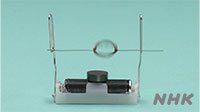
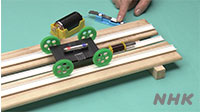

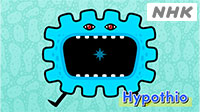



|Length : 10min. X8 |Year : 2021 |
(5th How can you make motors spin?)
In this episode, children make predictions on how they can make motors spin and think about how they can verify their ideas. What should happen if your prediction is correct? Give it a thought!
(5th How does it move forward?)
In this episode, children think about why a toy car is able to move on a rail. The rail is fitted with electromagnets, and the toy car has a magnet on it. Why is it that the car can move froward? And how would it be possible to make it move even further?
(6th What happens when things burn?)
What happens to air when something is burned? The children use a lit candle and limewater to check what happens to each of the main gases that make up the air, namely nitrogen, oxygen, and carbon dioxide for clues to hypothesize on. Will the children in this episode be able to gain a reasonable understanding of the phenomenon? Tune in to find out!
(6th Why do fires go out?)
Why do fires go out? The children use limewater and a gas detector to check each of the main gases that make up the air, namely nitrogen, oxygen, and carbon dioxide for clues to hypothesize on. Join the children and the Wonder Monsters as they set out to find out more about this scientific wonder!
(6th Where does starch come from? ーPlanning the experimentー)
Starch is the nutrient plants thrive on. To learn where exactly starch can be found in a plant, children look at the root, stem, and leaves of a plant, and discover that starch is actually stored only in large amounts in the leaves. They hypothesize why that is the case, and then come up with ideas for an experiment that would enable them to examine whether their hypothesis is correct. What great ideas will the children come up with? Tune in to find out!
(6th Where does starch come from? ーObservationsー)
Plants thrive on starch. The children conduct an experiment to test out their hypothesis that starch is produced when sunlight shines on the leaves. They then look at the results of the experiment and think further about the phenomenon. Join the children as they put on their thinking caps to come up with great ideas. And will they be able to reach a reasonable understanding of how plants produce starch? Tune in to find out!
(6th The structure of the human body ーIngestion and respirationー)
What happens to the food we eat and the air we breathe after we put them in our bodies? The episode includes footage that will make the viewers think about the bodily functions that allow us to take in nutrients and oxygen, both of which are essential for our survival. Will the children in this episode be able to gain a reasonable understanding of the phenomenon? Tune in to find out!
(6th The structure of the human body ーObservationsー)
What happens to the food we eat and the air we breathe after we put them in our bodies? The episode includes footage that will make the viewers think about the bodily functions that allow us to take in nutrients and oxygen, both of which are essential for our survival. Will the children in this episode be able to gain a reasonable understanding of the phenomenon? Tune in to find out!
 Why Doesn’t Oxygen Run Out?
Why Doesn’t Oxygen Run Out?
ED322318![]()
第10回 なぜ酸素はなくならない? [NHK]
![]()
![]()

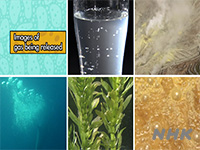



|Length : 10min |Year : 2023 |
Endless Wonders is a science program for elementary schoolers. The “Wonder Monsters” featured in the program will take children on a journey to discover and challenge the wonders that can be found around them, through exciting footages and everyday references.
These episodes are mainly aimed for 6th graders. In each episode, the Wonder Monsters present a particular everyday “wonder.” From investigating the wonders around you, what can you say? How much can you find out? The program encourages the children to give things a thorough thought. By looking at the results of more than one experiment, they are taught the importance of looking at things from different sides to reach a conclusion.
The discussions and sharing of ideas between the elementary schoolchildren who appear, serve as hints for the viewer to start thinking science too.
Why doesn't oxygen disappear from the Earth’s air? The children hypothesize its relationship to plants, based on various situations in which gas is released. Results from experiments conducted to confirm this tell us when oxygen is produced. What will the children discuss as they search for answers? Tune in to find out!
 How Are Living Things Connected?
How Are Living Things Connected?
ED322317![]()
第9回 生き物どうしのつながりは? [NHK]
![]()
![]()



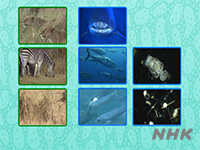

|Length : 10min |Year : 2023 |
Endless Wonders is a science program for elementary schoolers. The “Wonder Monsters” featured in the program will take children on a journey to discover and challenge the wonders that can be found around them, through exciting footages and everyday references.
These episodes are mainly aimed for 6th graders. In each episode, the Wonder Monsters present a particular everyday “wonder.” From investigating the wonders around you, what can you say? How much can you find out? The program encourages the children to give things a thorough thought. By looking at the results of more than one experiment, they are taught the importance of looking at things from different sides to reach a conclusion.
The discussions and sharing of ideas between the elementary schoolchildren who appear, serve as hints for the viewer to start thinking science too.
In this episode, we look into connections between living things. First, the children study what connections there are between the living things around us, using the “eat and be eaten” relationship in grasslands and the sea as clues. The children then consider cases where some creatures become extinct. Through this activity, what will they discuss as they search for answers? Tune in to find out!
 Are Cotyledons Necessary?
Are Cotyledons Necessary?
ED322316![]()
第3回 子葉は必要? [NHK]
![]()
![]()
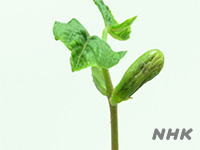




|Length : 10min |Year : 2023 |
Endless Wonders is a science program for elementary schoolers. The “Wonder Monsters” featured in the program will take children on a journey to discover and challenge the wonders that can be found around them, through exciting footages and everyday references.
These episodes are mainly aimed for 5th graders. In each episode, the Wonder Monsters present a particular everyday “wonder.” The program guides children to make predictions about the factors that are key in unraveling that wonder, and gets them thinking about how they can check their predictions through experiments. What are the conditions? How do you check if a prediction is correct? Wonder Monsters grow by eating what the children discover!
The discussions and sharing of ideas between the elementary schoolchildren who appear, serve as hints for the viewer to start thinking science too.
Are cotyledons necessary? Once the cotyledons germinate, they wither. But are cotyledons necessary for germination? Let's think about ways in which we can find this out!
 How Do You Germinate a Seed?
How Do You Germinate a Seed?
ED322315![]()
第2回 発芽させるには? [NHK]
![]()
![]()


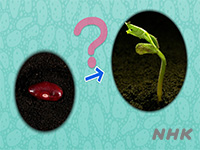


|Length : 10min |Year : 2023 |
Endless Wonders is a science program for elementary schoolers. The “Wonder Monsters” featured in the program will take children on a journey to discover and challenge the wonders that can be found around them, through exciting footages and everyday references.
These episodes are mainly aimed for 5th graders. In each episode, the Wonder Monsters present a particular everyday “wonder.” The program guides children to make predictions about the factors that are key in unraveling that wonder, and gets them thinking about how they can check their predictions through experiments. What are the conditions? How do you check if a prediction is correct? Wonder Monsters grow by eating what the children discover!
The discussions and sharing of ideas between the elementary schoolchildren who appear, serve as hints for the viewer to start thinking science too.
In this episode, we look at how to germinate a seed. What does it take to germinate a seed? There appears to be more than one way to do this. How will we be able to find this out?
 Endless Wonders 2020
Endless Wonders 2020
ED322000![]()
ふしぎエンドレス 2020年度 [NHK]
![]()
![]()

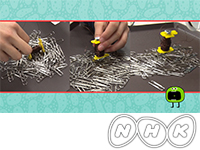
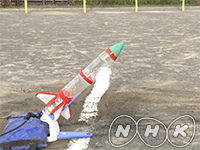
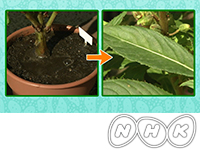
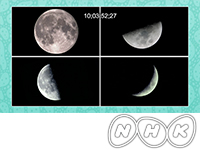
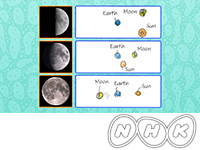
|Length : 10min. X6 |Year : 2020 |
(5th Grade How Do You Make an Electromagnet Stronger?)
When an electric current flows through an electromagnet with a wire wrapped around its iron core, it becomes a magnet. Now, how can we make it stronger? Do we make the iron core bigger? Do we change how we wrap the wire? Do we use a thicker wire? Let’s make predictions and think about how we will conduct the experiments.
(5th Grade Let's Improve the Electromagnet Experiment)
In the previous episode, the children thought about how they can make an electromagnet stronger and conducted experiments. Two groups predicted that “the more times an electromagnet is wrapped with wire, the stronger it gets” and did the same experiment using the exact same materials. However, the two groups saw different results. Why is this? When they do the experiment one more time, this time...
(5th Grade How to Do Researches)
A plastic bottle rocket that flies with the help of water and air. How can we make it fly farther? Do we pump in lots of air? Do we fill it with lots of water? Do we increase the angle of the launch pad? In order to check whether a prediction is correct, we need to experiment. But then, what are the important points we need to be careful about when doing the experiments? When checking how the amount of water affects the power of the rocket, what do we do with the amount of air?
(6th Grade How Does Water Reach the Leaves?)
Does water go up the stem like it does in a straw? Does it soak in like it does in a sponge? To check this, we cut the stem and observe very closely. What can we tell from what we see? We take it a step further and add color to the water to see where the water is passing. What do the schoolchildren say?
(6th Grade Why Does the Moon Change Shape?)
Are there multiple moons? Is it emitting light, or is it changing where it’s emitting light? Is light being shed on it from elsewhere? A crescent moon, a half moon, a full moon... We’ll take a good look at all kinds of moons through a telescope, observe the details, and narrow down the possibilities. What’s the conclusion?
(6th Grade How Does the Moon Change Shape?)
By looking at how the moon changes its shape and location in the sky every day, we predict that the positional relationship the moon has with the sun and earth has something to do with it all. We prepare a light that represents the sun and a ball that represents the moon to visualize the hypothesis. What’s the conclusion that we reach from the experiment?














